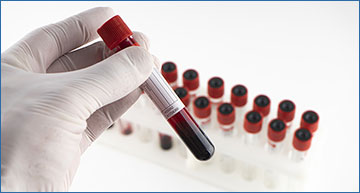For medical diagnostics and biomarker discovery, the ability to analyze gene expression from peripheral blood RNA holds immense potential. This technique offers valuable insights into systemic changes in gene expression and immune responses, aiding in the diagnosis and monitoring of various diseases. However, traditional methods for extracting RNA from frozen blood samples collected in EDTA tubes have posed significant challenges due to the degradation of RNA quality.

In a new study, researchers from the University of Sydney have unveiled a novel protocol designed to overcome these obstacles and extract high-quality RNA from frozen EDTA blood samples. Historically, obtaining high-quality RNA from frozen blood has been a daunting task, often requiring specialized RNA-stabilization systems or fresh blood samples. However, the newly developed protocol offers a practical and efficient solution to this longstanding problem.
The key innovation of this protocol lies in the use of cell lysis and RNA stabilization buffers, specifically Paxgene or Nucleospin, during the thawing process of frozen EDTA blood. Remarkably, this simple addition significantly improved RNA quality, with RNA integrity numbers (RIN) soaring from below 5 to above 7 – a feat previously thought unattainable.
Comparative analysis revealed that the EDTA-Nucleospin protocol not only enhanced RNA quality but also yielded five times more RNA compared to the conventional EDTA-Paxgene-PreAnalytix method. Moreover, the average RIN and mRNA expression levels of key genes remained consistent with those from Paxgene blood samples, indicating similar RNA quality and blood transcriptome profiles.
One of the remarkable features of this protocol is its ability to simultaneously extract DNA, providing researchers with a comprehensive toolkit for molecular analysis. This dual functionality enhances the efficiency and versatility of the protocol, further expanding its utility in research and diagnostics.
The development of this innovative protocol marks a significant milestone in the field of RNA extraction from frozen blood samples. By offering a practical and efficient method for obtaining high-quality RNA from EDTA blood, researchers can now unlock the potential of frozen blood samples for gene expression analysis and biomarker discovery. This breakthrough paves the way for advancements in medical research and clinical diagnostics, ultimately improving our understanding and management of various diseases.
Nguyen LT, Pollock CA, Saad S. (2024) Extraction of high quality and high yield RNA from frozen EDTA blood. Sci Rep 14(1):8628. [article]




